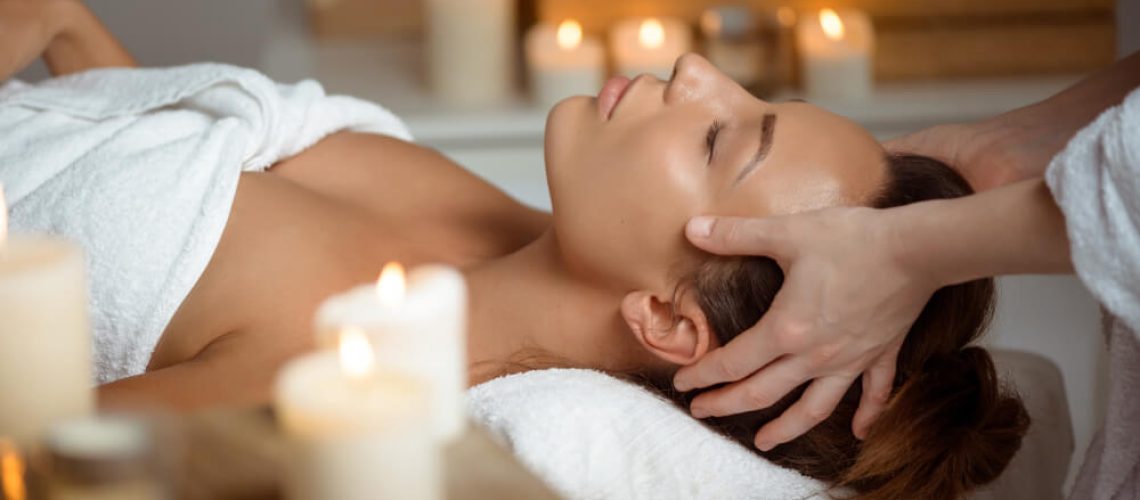
The Healing Power of Head Massage: How Scalp Therapy Boosts Relaxation, Brain Function, and Well-Being
Head Massage Benefits, In today’s fast-paced, high-stress world, few experiences feel as instantly soothing and deeply revitalizing as a good head massage. Whether it’s a professional scalp spa therapy, a gentle home treatment with nourishing oils, or an acupressure-based technique from ancient traditions, the results go far beyond simple relaxation.
Head massages have been practiced for thousands of years across cultures — from the Indian art of Champi (the origin of the word “shampoo”) to traditional Chinese medicine and modern spa rituals. Today, science is catching up with what many have long known: the benefits of head massage reach deep into the nervous system, improving circulation, brain function, and emotional balance.
This in-depth guide explores why scalp and head therapies are so powerful, how they work, what oils and techniques are best, and why everyone — from busy professionals to wellness enthusiasts — should make relaxation head treatments a regular part of their self-care routine.
1. Why Head Massage Matters More Than Ever
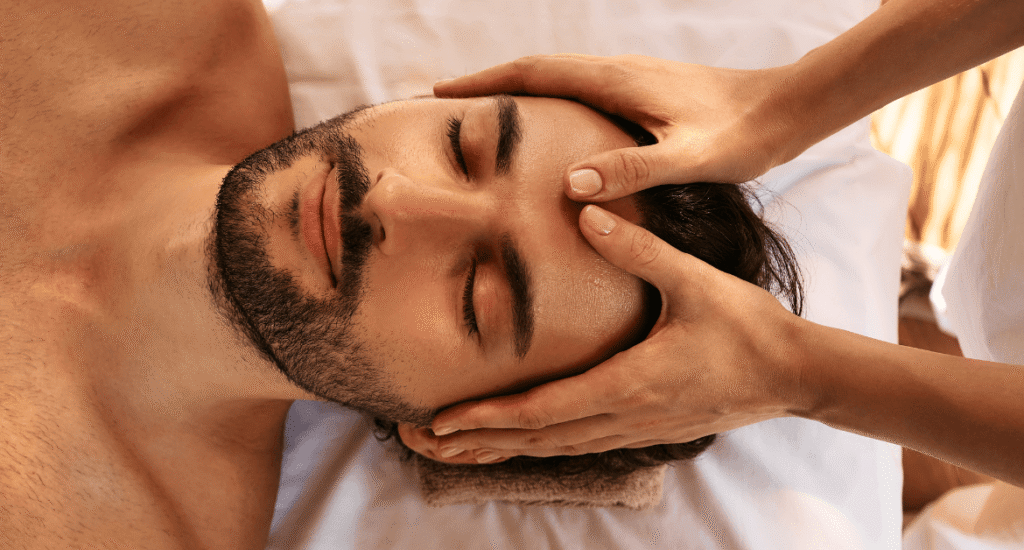
In modern life, tension tends to accumulate in the head, neck, and shoulders — the body’s central stress zones. Hours of screen time, lack of sleep, mental overactivity, and emotional pressure lead to tightness that restricts blood flow and energy to the brain.
A scalp spa therapy counteracts these effects by releasing physical tension and promoting relaxation through touch and rhythm. The scalp contains hundreds of nerve endings and pressure points connected to various parts of the body and brain. When stimulated, these points send signals to the nervous system that slow the heart rate, lower blood pressure, and reduce stress hormone levels.
The Science of Relaxation
Studies show that head massages activate the parasympathetic nervous system — the body’s “rest and digest” mode. This switch from the overactive stress response to deep relaxation helps balance hormones, improve focus, and restore overall well-being.
In short: while your body enjoys the calming sensations, your brain resets and recharges.
2. The Ancient Roots of Head and Scalp Therapy
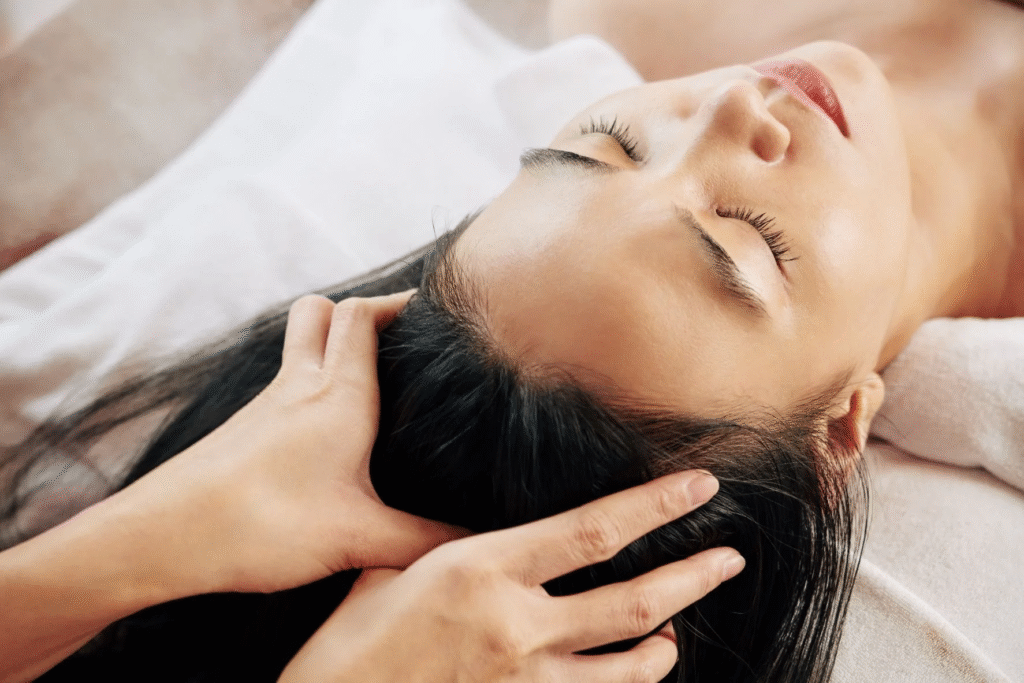
Indian Head Massage (Champissage)
Originating in Ayurveda, the Indian tradition of head massage — known as Champi — has been practiced for over 4,000 years. Traditionally, warm herbal oils were massaged into the scalp to nourish the hair and soothe the mind. The technique includes rhythmic strokes, gentle kneading, and acupressure points along the head, neck, and shoulders.
Ayurveda views the head as the center of energy channels (marma points). By massaging these points, Prana (life force energy) flows freely, bringing clarity, better sleep, and harmony between body and mind.
Chinese Acupressure and Meridian Therapy
In traditional Chinese medicine, head massage is linked to stimulating meridians — energy pathways that influence internal organs and emotional health. By applying gentle pressure to points on the scalp and temples, practitioners help release blocked energy and promote better blood flow to the brain.
Modern Spa Evolution
Today’s relaxation head treatments combine ancient wisdom with modern wellness science. High-end spas incorporate aromatherapy oils, warm compresses, and scalp exfoliation to enhance both physical and mental rejuvenation.
3. The Proven Benefits of Head Massage
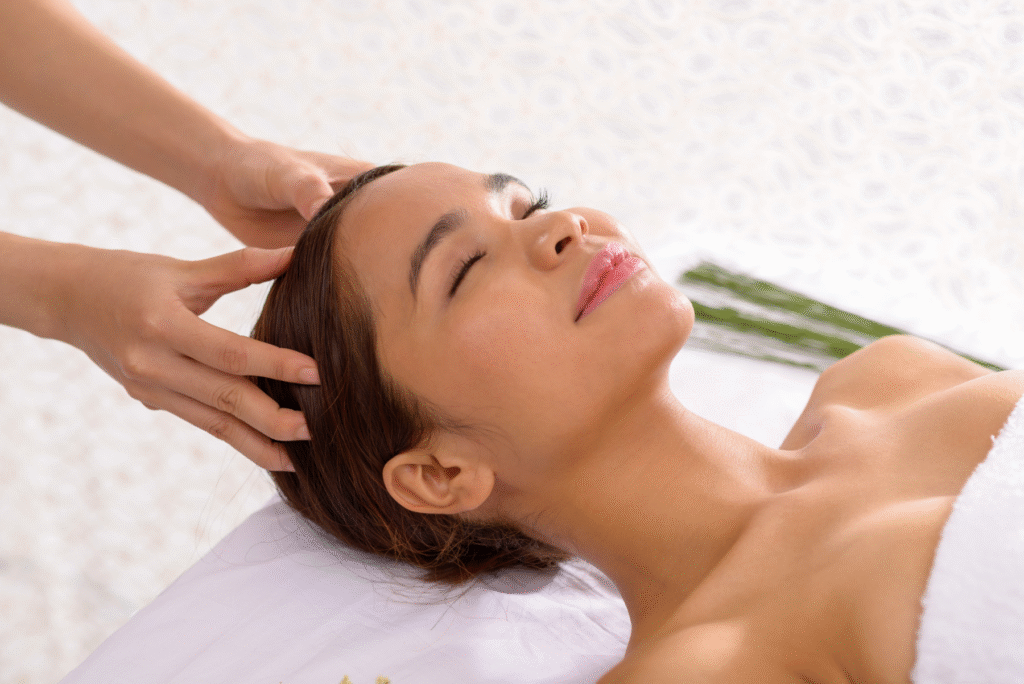
Regular head massage offers a long list of scientifically backed and traditionally known benefits.
1. Deep Relaxation and Stress Relief
One of the most immediate head massage benefits is the feeling of total calm. Gentle strokes, rhythmic movements, and the warmth of oil relax the muscles and calm the nervous system. Cortisol (the stress hormone) drops, while serotonin and dopamine — the “happy hormones” — increase.
This makes scalp therapy a natural remedy for anxiety, tension headaches, and insomnia.
2. Improved Blood Circulation to the Brain
Massage stimulates microcirculation in the scalp, improving the delivery of oxygen and nutrients to brain cells. Better blood flow can help enhance focus, memory, and mental clarity — making scalp spa therapy not only relaxing but also mentally rejuvenating.
3. Release of Muscle and Nerve Tension
The head, neck, and shoulder areas often hold micro-tension from stress and poor posture. A targeted massage loosens tight fascia and muscles, helping relieve headaches and migraines caused by strain or eye fatigue.
4. Boosted Hair and Scalp Health
Besides relaxation, head massages improve scalp health by unclogging hair follicles and stimulating natural oil production. This encourages stronger hair growth and reduces dandruff and dryness.
When combined with nourishing oils like coconut, argan, or amla oil, it can transform dull, tired hair into shiny, healthy locks.
5. Better Sleep Quality
Relaxation head treatments before bedtime can significantly improve sleep patterns. The calming pressure on nerves and energy points helps quiet racing thoughts and induces deep, restorative rest.
6. Enhanced Cognitive Function
Regular stimulation of the scalp improves oxygenation and nutrient supply to the brain, supporting better focus, memory retention, and creative thinking. Many people report feeling more alert and inspired after a short head massage session.
7. Emotional and Energetic Balance
The human head is not only a physical center but also an emotional one. Gentle touch helps release emotional blockages and promotes a sense of connection, safety, and grounding — essential in times of stress or anxiety.
4. Key Techniques Used in Head and Scalp Therapy

There are several methods to deliver effective scalp spa therapy or at-home head treatments. Each has its own rhythm, pressure, and purpose.
1. Circular Motions and Effleurage
Gentle circular strokes with fingertips across the scalp improve blood flow and relax the surface muscles. Effleurage — smooth, gliding movements — soothes the nerves and helps spread oils evenly.
2. Acupressure and Trigger Points
Acupressure techniques target key points such as the temples, the base of the skull, and the crown of the head. These points correspond to tension zones, and gentle pressure releases accumulated stress.
3. Kneading and Friction
Small kneading movements along the scalp stimulate deep tissue layers, while friction techniques (small circular rubbing) warm the skin and enhance relaxation.
4. Tapping and Rhythmic Percussion
Light tapping with fingertips activates energy and promotes mental clarity. It’s often used at the end of a session to awaken the senses after deep relaxation.
5. Warm Compresses and Aromatherapy
Adding a warm towel or compress enhances relaxation and allows oils to penetrate deeply. Essential oils such as lavender, rosemary, and peppermint can elevate the experience and target specific issues — from mental fatigue to sinus congestion.
5. Best Oils for Head Massage and Scalp Therapy

The right oil not only enhances the sensory pleasure of relaxation head treatments but also provides nourishment for the scalp and hair.
Coconut Oil
Light and deeply moisturizing, coconut oil is rich in fatty acids that protect hair from damage and dryness. Its natural scent promotes relaxation and reduces inflammation.
Almond Oil
Packed with vitamins E and D, almond oil strengthens hair roots and soothes the scalp. It’s perfect for dry skin and helps improve texture over time.
Argan Oil
Often called “liquid gold,” argan oil contains antioxidants that repair damaged follicles and add shine. It’s non-greasy and ideal for sensitive skin.
Amla Oil
Used in Ayurveda for centuries, amla oil promotes hair growth, prevents premature graying, and enhances scalp circulation.
Rosemary and Peppermint Oils
These essential oils stimulate blood flow, improve focus, and relieve headaches. When mixed with a carrier oil, they refresh the senses and energize the mind.
Lavender Oil
Known for its calming effects, lavender oil helps reduce stress and anxiety — perfect for a nighttime scalp spa therapy session before bed.
6. How Head Massage Supports Brain Function
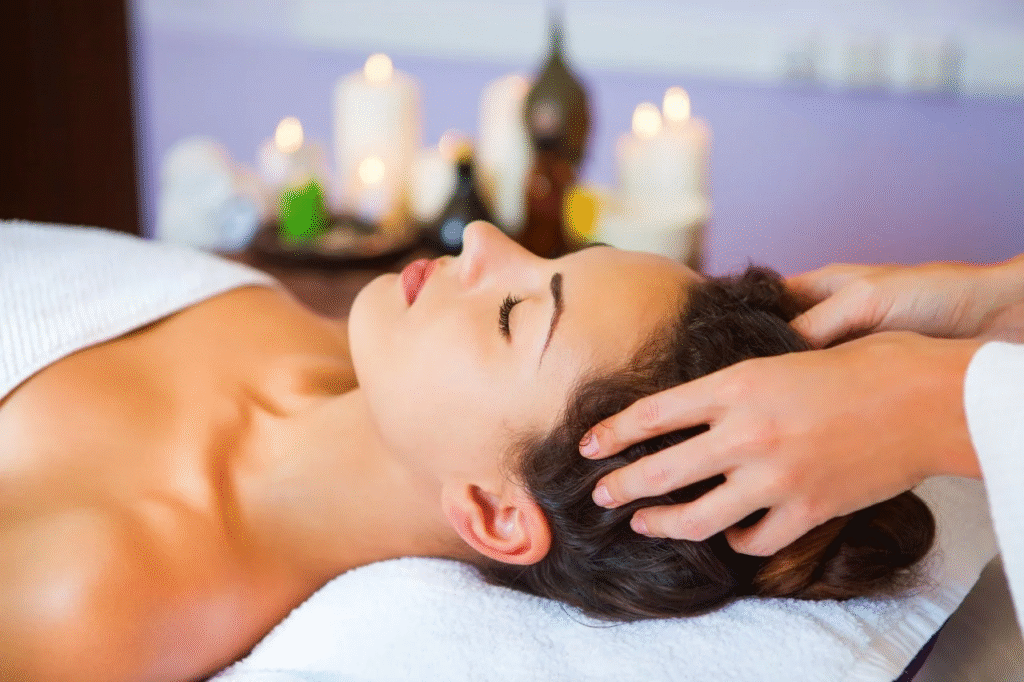
It may seem surprising, but research shows that gentle scalp stimulation has measurable effects on brain performance.
Better Oxygen and Nutrient Flow
The brain consumes 20% of the body’s oxygen. A head massage improves blood circulation, ensuring a steady oxygen supply that supports concentration and memory.
Balancing the Nervous System
Acupressure on the scalp activates the vagus nerve — one of the main pathways for relaxation. This helps reduce anxiety, lower heart rate, and improve overall mental health.
Increased Production of Neurochemicals
Massage promotes the release of endorphins and serotonin, chemicals that enhance mood and reduce pain perception. This explains why regular head massages can help combat mild depression or fatigue.
Mind-Body Synchronization
By calming the brain’s overactivity and grounding attention in physical sensation, head massage fosters mindfulness. This harmony between body and mind is one reason why relaxation head treatments are often compared to meditation.
7. How Often Should You Get a Head Massage?
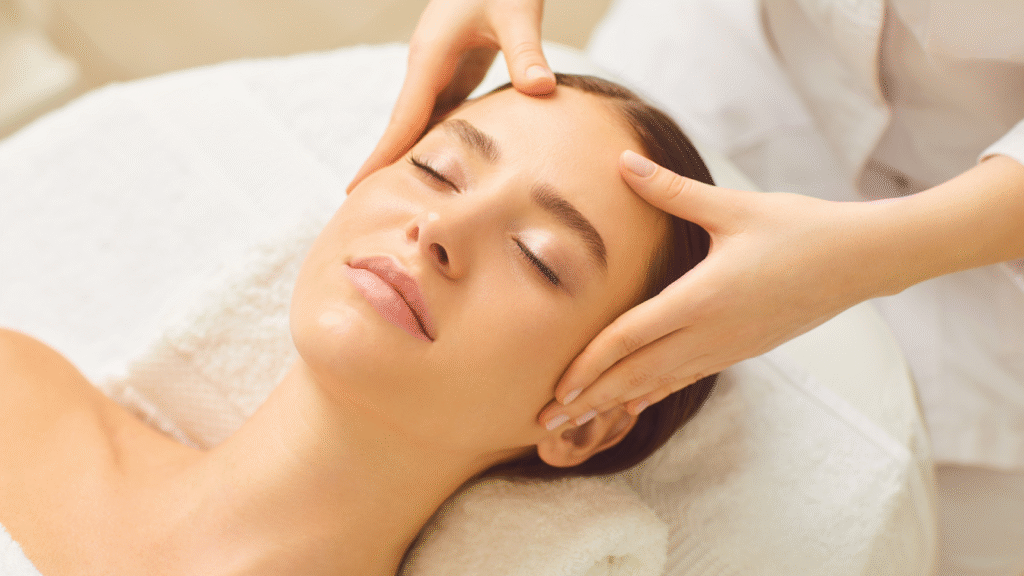
For lasting benefits, regularity is key.
- At home: 2–3 times a week using your favorite oil for 10–15 minutes.
- In a spa: Once every 2–4 weeks for a full professional session.
- For tension headaches: 5–10 minutes of acupressure whenever discomfort arises.
Over time, these short but consistent sessions can significantly reduce chronic stress, improve sleep, and enhance hair and scalp health.
8. The Modern Scalp Spa Experience
Luxury spas worldwide now offer advanced scalp spa therapy sessions that go far beyond traditional massage. These may include:
- Scalp detox rituals using gentle exfoliants to remove buildup and improve absorption.
- Warm oil infusion treatments to hydrate and nourish the scalp.
- LED light therapy to stimulate follicles and improve blood flow.
- Customized aromatherapy to match emotional and physical needs.
Such treatments are increasingly popular among people who suffer from burnout, mental fatigue, or tech-related tension — offering a holistic approach that benefits both beauty and mental clarity.
9. At-Home Head Massage: Step-by-Step
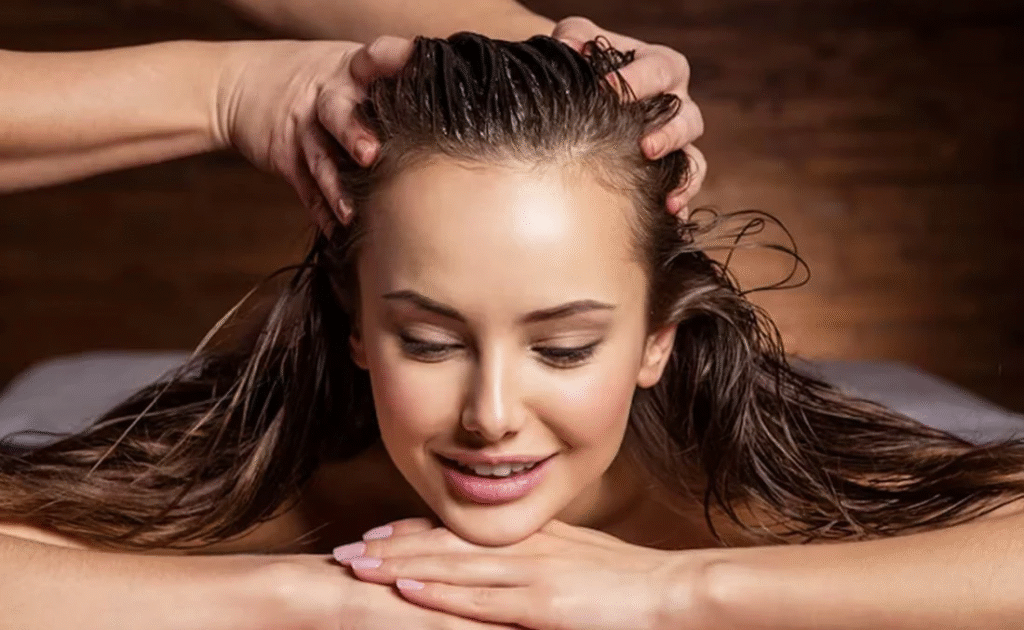
You don’t need a spa appointment to enjoy the benefits of head massage. Here’s how to recreate it at home:
- Choose your oil: Warm a small amount of coconut, almond, or argan oil.
- Prepare the space: Sit comfortably in a quiet area with relaxing music or candlelight.
- Apply the oil: Pour a few drops onto your scalp and gently spread with your fingertips.
- Massage:
- Use circular motions starting at the temples and move upward.
- Apply gentle pressure at the crown and base of the skull.
- Focus on the neck and shoulders to release tension.
- Breathe deeply: Inhale slowly to enhance relaxation.
- Wrap your head: Use a warm towel for 10–15 minutes to let the oils absorb.
- Rinse: Wash your hair with mild shampoo or leave the oil overnight for deeper nourishment.
This simple ritual can instantly calm your mind and refresh your body — a few minutes of tranquility with lasting results.
10. The Emotional Healing Aspect
Touch has a profound effect on emotional well-being. The human scalp is rich in sensory receptors that respond to warmth and pressure by releasing oxytocin — the “bonding hormone.”
When practiced regularly, relaxation head treatments can help release stored emotional tension, reduce loneliness, and foster a deeper sense of peace. This is why head massage is not just a beauty ritual but an act of emotional self-care.
11. Conclusion: A Gateway to Balance and Clarity
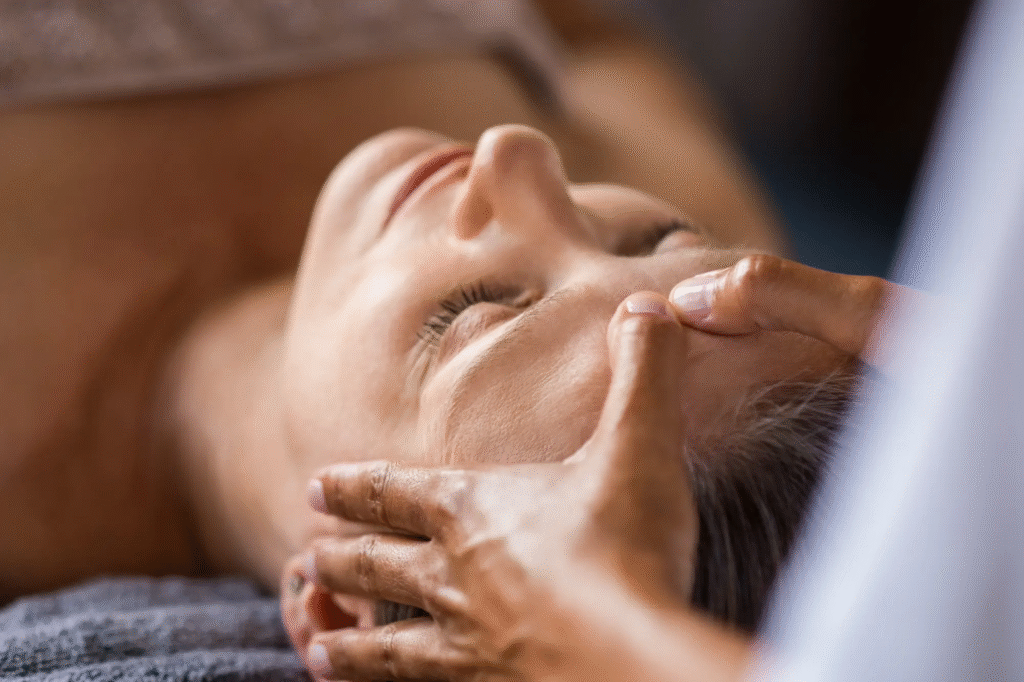
The benefits of head massage extend far beyond a pleasant feeling. By improving circulation, calming the nervous system, and releasing tension, scalp therapy becomes a bridge between body and mind — helping you reconnect with your natural rhythm of relaxation and clarity.
Incorporating scalp spa therapy or at-home head treatments into your weekly routine can transform not only your hair and skin but also your mood, sleep, and mental performance. Whether you’re seeking relief from stress, looking to boost your creativity, or simply wanting to feel centered again, the answer may lie at your fingertips — quite literally.
A few minutes of mindful touch can unlock profound calm, clarity, and vitality.
Because sometimes, the simplest gestures — a warm oil massage, slow breathing, gentle pressure — are the most powerful medicines for a busy modern mind.



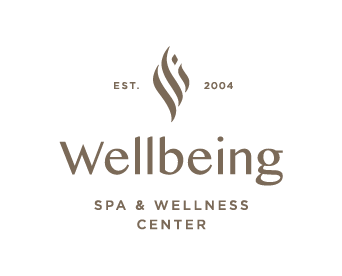
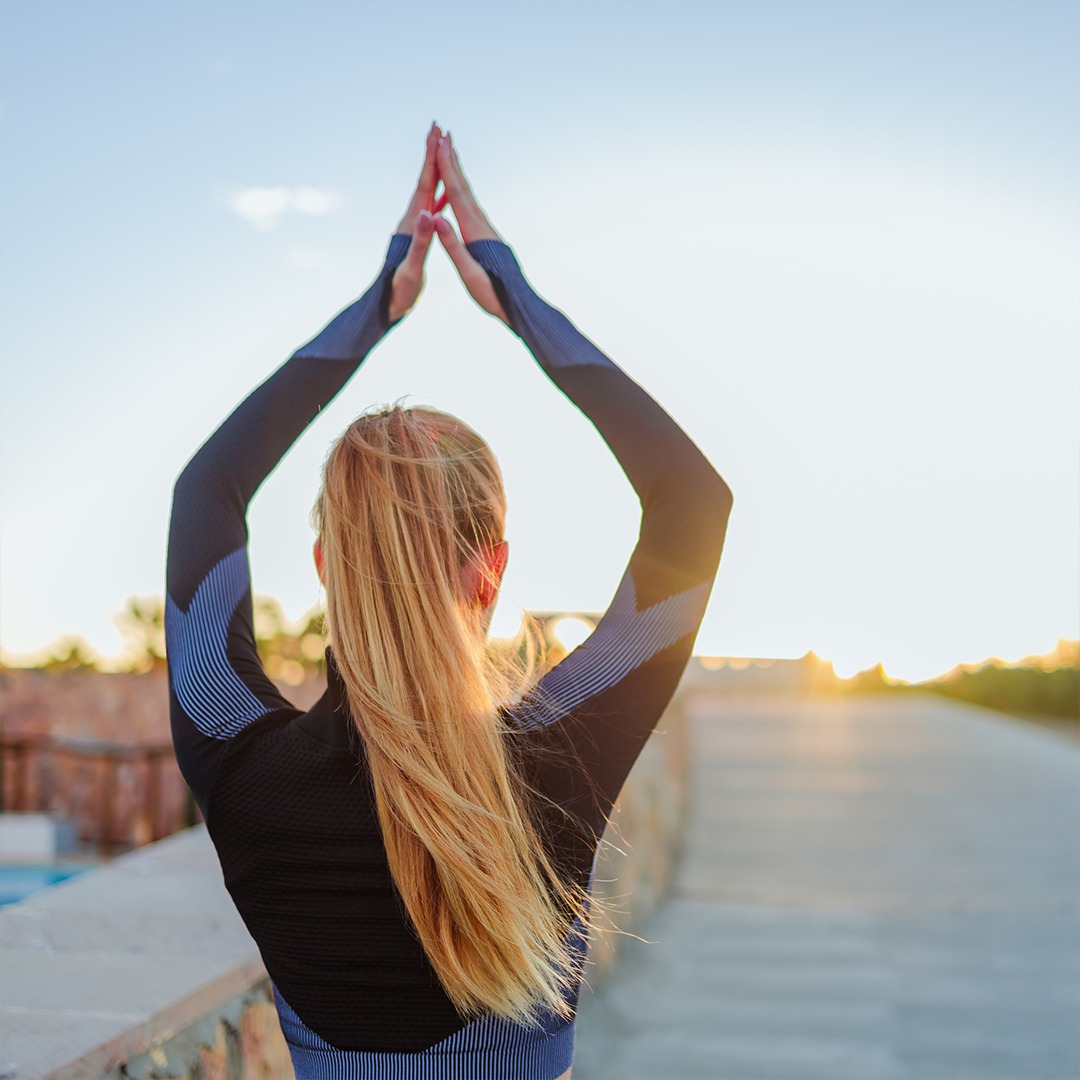
Leave a Reply